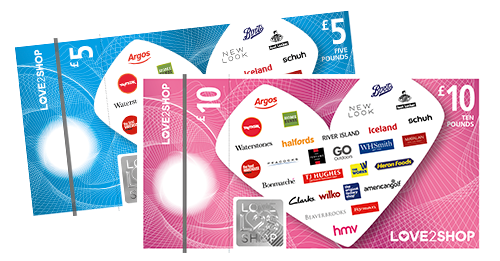Employee rewards are vital to your employee recognition and benefit mix. Getting the most from your rewards means getting to grips with the basics of using them. Enjoy the full rundown on what you need to know about employee rewards.
In this blog, we cover the fundamentals of:
1. What employee rewards are
2. Why employee rewards matter
3. When you should reward staff
4. How to manage your rewards
Click to jump to a section.
What employee rewards are
An employee reward is any token, gift, prize, or cash-value trophy. You use them to thank employees for something you or your company believe is valuable.
That’s the simple part. The harder part is figuring out how you can make the best use of them in your business.
How that intersects with recognition and incentives
Recognition

Rewards act as a signal boost for recognition. We’ve said this a few times, but rewards aren’t the same as recognition.
They’re linked, because rewards can back up recognition. But it’s important to get a grip on how recognition works without rewards to make sure you’re getting the most out of your rewards.
Incentives
It’s easy to confuse incentives and employee rewards and put them into the same neat category. The truth is they’re related, but very different ideas.
An incentive still involves a reward, but to be an incentive the employee reward needs to be withheld until the employee or team hits a target.
An effective incentive also has to be discussed ahead of time to give the employee motivation to complete a task or hit a milestone. Otherwise, you’re firmly in the world of just issuing rewards.
Now that you’ve got the what, we’ll walk you through the why, when and how of using employee rewards for your business.
We’ll start with why they’re so important.
Why you need to offer employee rewards
You need to offer rewards for three major reasons:
- Intrinsic and extrinsic rewards.
- Operant conditioning.
- Expectation.
We’ll explain each of them here.
Intrinsic and extrinsic rewards
 In the office, intrinsic reward is the feel-good sensation your staff take from their work. Feeling proud of achievements.
In the office, intrinsic reward is the feel-good sensation your staff take from their work. Feeling proud of achievements.
Taking pride in supporting their team. Feeling a sense of accomplishment in helping the business reach its goals.
Many elements go into that sensation. Your management style, engagement, the work itself. And recognition, too. That’s why it’s so important you get a grip on both rewards and recognition.
Extrinsic rewards, the other kind, are the ones you buy from us. They’re external rewards that have some kind of tangible element. Their real-world cash value is what fuels their value to staff.
The two need separate understanding, but they intersect. The physical (extrinsic) rewards make the intrinsic (emotional) rewards more powerful. They do this by turning them into trophies.
Not only do your staff get something they enjoy through the reward, there’s a lasting impact. Non-cash value rewards make excellent trophies. Unlike cash, which we’ve covered already as a poor reward.
Those trophies have an afterglow. They help your employee bask in a sense of achievement whenever they reflect on their reward.
That means employee rewards do more than make employees feel great about one achievement. It makes them feel better about their entire job. It’s a useful tool for building employee engagement.
Combined, there’s a big influence on motivation and job performance. Assuming you deploy your employee reward scheme effectively.
Operant conditioning
 Operant conditioning is a fancy way of saying “getting people to do what you want.”
Operant conditioning is a fancy way of saying “getting people to do what you want.”
The concept is similar to Pavlov and his famous bell. Only instead of making your employees hungry you make them feel good.
The process is very simple. Your employees do something exceptional. What that is, we’ll address later. Recognising this exceptional event, you reward the employee.
The reward, as we’ve said, doubles-down on how good they already feel about their achievement.
It’s human nature to seek out those good feelings again. Behaviour you reward is behaviour you’re more likely to see repeated in the future.
As a result, you quietly train staff to associate good feelings with work achievements.
The rewards, like the ones we supply, make that easy.
Expectation
 Rewards are an extremely common tool for incentives and motivation. Excellence requires acknowledgement and celebration. As we pointed out, rewards are a very effective tool for marking and creating high performance.
Rewards are an extremely common tool for incentives and motivation. Excellence requires acknowledgement and celebration. As we pointed out, rewards are a very effective tool for marking and creating high performance.
The flip side of rewards being commonplace is that they become an expectation. What was once a fringe benefit is something staff assume they’ll receive.
Expectation is very important to employees. Failing to meet it starts to erode the way employees see their employers. Over time, failing to match expectation chips away at their faith in the business.
This has a knock-on effect on employee engagement.
Summary:
To summarise, you need to offer rewards for three primary reasons.
1. They’re good for motivation, morale and productivity. They interact with and amplify the intrinsic rewards we mentioned to do that.
2. Employee rewards help you get more of what you want from staff. That’s by influencing and reinforcing their behaviour through rewards.
3. Staff are expecting to receive them.
Now it’s a question of when you should be doling out the rewards.
When you need to offer employee rewards
 As we pointed out earlier, rewards work as behaviour modifiers. As such, rewards need deploying when you have a chance to create a better work culture.
As we pointed out earlier, rewards work as behaviour modifiers. As such, rewards need deploying when you have a chance to create a better work culture.
We can’t tell you every single situation in your company when a reward would be appropriate.
At least not without one of the team getting to know your business first (you’re always welcome to give us a call, we’d love to do just that).
But we can give you, based on your experience, some suggestions to start the engine for you.
Reward employees for:
- Exceeding performance targets
- Exceptional customer service
- Sustained outstanding performance
- Putting other people’s needs before their own
- Going beyond their job description for the company
- Spotting major roadblocks and coming up with ways around them.
- Exceptional ideas for the future. You should already have a way to submit ideas, and you should reward the most exceptional ideas
- Volunteering their free time to support charities you value
- Putting your company values first in their work and behaviour
- Taking up an exceptional amount of voluntary training
- Solving a long-standing problem
- Organising fun (but appropriate) social events or drumming up community spirit
- Referring valuable new clients
- Displaying notable loyalty to the business
- Being a leader in the office, whether it’s making sure the office gets cleaned or helping employees deal with change
 If you’re ever unsure if an employee should be rewarded, run a mental checklist. Ask yourself if the situation is:
If you’re ever unsure if an employee should be rewarded, run a mental checklist. Ask yourself if the situation is:
- Notable: For both the employee and their peers, the reward should attach to something obviously notable.
- Positive: It should almost go without saying, but only reward positive behaviour.
- Values-based: In clear alignment with your company values.
- Purposeful: Contributes to the purpose and mission of your company.
- Timely: Don’t let time pass between a noteworthy employee event and your offering of a reward.
Now you know what, why and when. It’s just a question how rewards should find their way to staff.
How to reward employees
The different types of employee rewards, how to deliver them to staff, and the relative merits of each approach.
Digital, physical, a blend of each, the benefits and drawbacks.
Types of rewards
- Cash.
- Cash-value.
- Gift cards.
- Vouchers.
- Digital reward codes.
- Trophies.
- Merchandise.
- Experiences.
The pros and cons of different employee rewards
Cash
Cash is not a great reward, even if it is a popular one. Read more about our opinion on that here. But to give you the summary: your staff are used to it.
It’s an existing transaction. Money is also a source of stress. It doesn’t make sense to confuse pay and rewards by rewarding with cash.
Gift Cards
Gift cards are versatile and exciting. Our gift cards come with more than 95 in-store retailers, and e-gift cards.
are versatile and exciting. Our gift cards come with more than 95 in-store retailers, and e-gift cards.
E-gift cards are a further selection of physical and digital brands accessed by swapping the value of your gift card online. Gift cards work for just about anyone, assuming you can get them delivered.
Vouchers
Vouchers are simple, tactile and immediate. We still see a place for the voucher in the reward marketplace.
are simple, tactile and immediate. We still see a place for the voucher in the reward marketplace.
Particularly for on the spot, quick rewards among staff that can’t use a phone or computer at work.
Digital rewards
Digital reward codes (or e-codes) make it simple to ping rewards about teams that aren’t always in the same.
(or e-codes) make it simple to ping rewards about teams that aren’t always in the same.
By using SMS and as delivery, anyone with a phone or computer can receive the reward.
Experiences
 We’ve watched the demand for experience grow massively over the last two years. It’s a sign of changing times, as more of the younger generation enters the workforce.
We’ve watched the demand for experience grow massively over the last two years. It’s a sign of changing times, as more of the younger generation enters the workforce.
As a result, there’s less emphasis on items and more longing for adventure. Whether it’s a group experience or individual experiences, they’re rising as workplace demographics change.
Trophies
There’s still a place for the simple trophy. Even if other rewards become their own sort of trophies, an actual trophy has value.
They’re very effective for capping off internal contests or light-hearted competitions. And they’re extremely cost-effective compared to the positives impact on morale.
Merchandise
We don’t just mean a company-branded windbreaker. We’re talking about electronics, fashion, kitchenware, cameras, sporting equipment, luggage and more.
Demand for merchandise tends to trend toward older generations, but there’s a lot of older workers to cater for.
Sourcing your rewards
Obviously, we’re a bit biased on this subject. But you would have to be mad to try to source and house a catalogue worth of rewards on your own.
Especially if you want to use a mix of rewards. Let a third party handle that for you. Reward suppliers offer you reward management, platforms, expertise on running schemes and quick delivery.
Our employee rewards as a case study
 Your company doesn’t have to just pick a reward and stick with it. Love2shop’ teams are a great example of using a blend of rewards.
Your company doesn’t have to just pick a reward and stick with it. Love2shop’ teams are a great example of using a blend of rewards.
We have logistics, office-bound and mobile staff across multiple locations. We have to mix up how we reward teams.
Our warehouse staff spend most of their time away from a computer. To keep the warehouse ticking there’s a lot of picking, packing, boxing and counting going on.
So any kind of employee reward tends to be physical. Our warehouse teams also swell quite a lot during the run-up to Christmas. Gift cards and vouchers are timely and tangible.
In a warehouse environment, without phones or computers handy, they make perfect sense.
Some of our sales staff, on the other hand, are mobile. And we also have a second location down south.
Mobile sales staff are only in the office once or twice a month, and our second office come to HQ even more sporadically.
 For them, a reward essentially has to be digital. We can send digital rewards quite easily with a digital reward code.
For them, a reward essentially has to be digital. We can send digital rewards quite easily with a digital reward code.
Anyone, anywhere, gets a code through their phone or email and cash them in straight away.
Meanwhile, we have a lot of flexibility for our permanent in-office staff. Because all of our employees have an Everyday Benefits discount gift card, we can top them up as a reward.
It saves us issuing a brand new gift card for every reward opportunity. They then spend the EDB discount card just like a regular Love2shop Gift Card.
We can also draw on business occasion cards and occasionally digital rewards.
Just like our clients, we have a mix of options at our disposal because we have a mix of staff.
What you need to do now about your employee rewards
Start implementing. Worry about formalising and automating later. You could spend a long time planning and worrying about the perfect reward scheme, but just getting started matters.
Time spent dithering is time spent not trying, doing or learning. You will want to deploy, assess, re-assess and adjust as time goes on. Starting with a modest, deliverable plan and expand on your successes.
Use our list of behaviours as inspiration to get started, and assemble a list of achievements to look for. Once you know what you want to reward, consider how your employees work.
Their unique work conditions will dictate the type of reward and how it’s delivered. Then just get to it.
If you want anything, whether that’s some gift cards or just some advice. Get in touch. We’d love to talk to you. Just use the live chat on this blog, call us on the number at the top of this page, or shoot us an email.
 Travelling is enriching, energising and broadens the mind. It’s also one of the most common ambitions your employees are likely to have.
Travelling is enriching, energising and broadens the mind. It’s also one of the most common ambitions your employees are likely to have. If you care about something, and it’s part of your company’s values, give your staff a stake in it.
If you care about something, and it’s part of your company’s values, give your staff a stake in it. Make the everyday a little bit easier, every day. Offer your employees a way to ease the daily burden of the things they can’t avoid making part of their routine spending.
Make the everyday a little bit easier, every day. Offer your employees a way to ease the daily burden of the things they can’t avoid making part of their routine spending.


 In the office, intrinsic reward is the feel-good sensation your staff take from their work. Feeling proud of achievements.
In the office, intrinsic reward is the feel-good sensation your staff take from their work. Feeling proud of achievements. Operant conditioning is a fancy way of saying “getting people to do what you want.”
Operant conditioning is a fancy way of saying “getting people to do what you want.” Rewards are an extremely common tool for incentives and motivation. Excellence requires acknowledgement and celebration. As we pointed out, rewards are a very effective tool for marking and creating high performance.
Rewards are an extremely common tool for incentives and motivation. Excellence requires acknowledgement and celebration. As we pointed out, rewards are a very effective tool for marking and creating high performance. As we pointed out earlier, rewards work as behaviour modifiers. As such, rewards need deploying when you have a chance to create a better work culture.
As we pointed out earlier, rewards work as behaviour modifiers. As such, rewards need deploying when you have a chance to create a better work culture. If you’re ever unsure if an employee should be rewarded, run a mental checklist. Ask yourself if the situation is:
If you’re ever unsure if an employee should be rewarded, run a mental checklist. Ask yourself if the situation is: are versatile and exciting. Our gift cards come with more than 95 in-store retailers, and e-gift cards.
are versatile and exciting. Our gift cards come with more than 95 in-store retailers, and e-gift cards. are simple, tactile and immediate. We still see a place for the voucher in the reward marketplace.
are simple, tactile and immediate. We still see a place for the voucher in the reward marketplace. (or e-codes) make it simple to ping rewards about teams that aren’t always in the same.
(or e-codes) make it simple to ping rewards about teams that aren’t always in the same. We’ve watched the demand for experience grow massively over the last two years. It’s a sign of changing times, as more of the younger generation enters the workforce.
We’ve watched the demand for experience grow massively over the last two years. It’s a sign of changing times, as more of the younger generation enters the workforce. Your company doesn’t have to just pick a reward and stick with it. Love2shop’ teams are a great example of using a blend of rewards.
Your company doesn’t have to just pick a reward and stick with it. Love2shop’ teams are a great example of using a blend of rewards. For them, a reward essentially has to be digital. We can send digital rewards quite easily with a digital reward code.
For them, a reward essentially has to be digital. We can send digital rewards quite easily with a digital reward code.
 Connect the work your employees do to something more interesting than bars on a chart. Then make that your purpose, and find a way to talk about it.
Connect the work your employees do to something more interesting than bars on a chart. Then make that your purpose, and find a way to talk about it. Having a voice in decision-making gives staff a sense of buy-in over their work and what they’re being asked to do.
Having a voice in decision-making gives staff a sense of buy-in over their work and what they’re being asked to do. Not only the future of the business, but the future of the employee. It’s important for two major reasons.
Not only the future of the business, but the future of the employee. It’s important for two major reasons. You don’t want an immobile, low-skilled workforce. You’ll hobble your company’s growth. The problem is, it’s so easy to create one through underinvestement in skills.
You don’t want an immobile, low-skilled workforce. You’ll hobble your company’s growth. The problem is, it’s so easy to create one through underinvestement in skills. Flexibility matters to workers. Employees
Flexibility matters to workers. Employees  Does your workplace work for your workforce? As companies grow, workplaces themselves can become a millstone around the neck.
Does your workplace work for your workforce? As companies grow, workplaces themselves can become a millstone around the neck.
 Our need to feel welcome, and our need to belong, are fundamental parts of the human experience. In the distant past it was more than just a good feeling, it was about survival.
Our need to feel welcome, and our need to belong, are fundamental parts of the human experience. In the distant past it was more than just a good feeling, it was about survival.
 Workers are only human, and humans need to be heard. Their point of view needs to be considered, and their opinions need to be given weight to keep staff morale high.
Workers are only human, and humans need to be heard. Their point of view needs to be considered, and their opinions need to be given weight to keep staff morale high. When you’re taking a train, you check where it’s going before you hop on. You don’t just hope the train is going somewhere nice, or blindly assume it’s going to the right place.
When you’re taking a train, you check where it’s going before you hop on. You don’t just hope the train is going somewhere nice, or blindly assume it’s going to the right place. Outstanding behaviour doesn’t just deserve to be rewarded, it needs to be
Outstanding behaviour doesn’t just deserve to be rewarded, it needs to be  Flexibility is one of the most-demanded perks across the country. And for good reason. Time outside work is at a tremendous premium, and the demands of work aren’t easing up either.
Flexibility is one of the most-demanded perks across the country. And for good reason. Time outside work is at a tremendous premium, and the demands of work aren’t easing up either.


